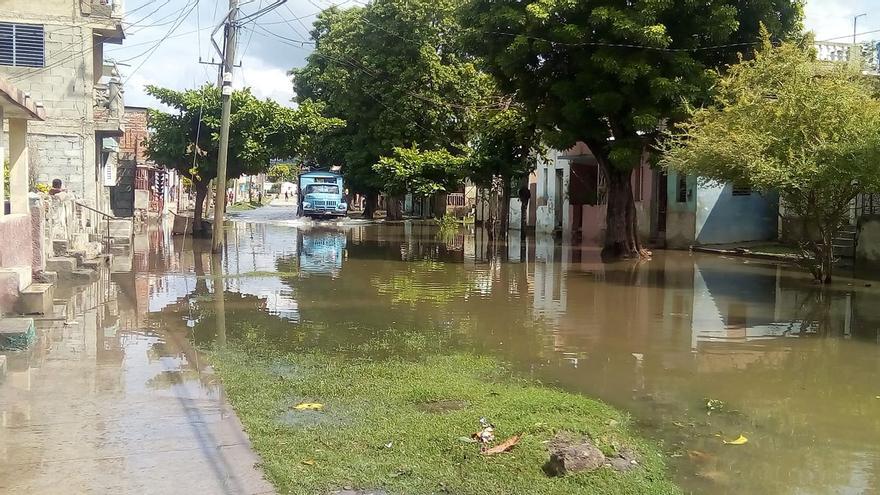
![]() 14ymedio, Havana, 30 November 2021 — The residents of the South Central Popular Council, of the José Martí Urban Center, in Santiago de Cuba, swim in black waters. The situation is such that more than 70 people have fallen ill with diarrhea.
14ymedio, Havana, 30 November 2021 — The residents of the South Central Popular Council, of the José Martí Urban Center, in Santiago de Cuba, swim in black waters. The situation is such that more than 70 people have fallen ill with diarrhea.
OnSunday, official journalist Cuscó Tarradell explained that on the afternoon of November 25 “there was a partial contamination” of the drinking water that is supplied in eleven districts of the South Central Popular Council, belonging to the José Martí Urban Center.
According to Tarradell, when trying to fix an obstruction in Avenida de las Américas, an excavation damaged the main water pipe, which together with a breakdown of the sewage network in the same place, caused a “crossing of the networks” and the consequent contamination of clean water pipes.
Despite the large number of people admitted to the hospital, the journalist assures that they were tested for cholera and were negative. Tarradell also says that on that same day, the contamination was eliminated and the fault repaired.
“We began to notice that the water that came through the pipe had a bad smell but it did not seem to be anything new to us because here it is often dirty,” Norma del Toro, a neighbor of the area most affected by the spill, explains to 14ymedio. “Luckily in our house we boiled the water but in this block several families had diarrhea.”
“For years here we’ve have to boil and then filter the water or buy it from the water carriers who bring it from places where it is cleaner,” explains the retiree. “You cannot trust the service and in houses where there are children or the elderly, it is best to buy it or take extreme measures.”
However, residents of the place published photos and videos in which they show that the situation is neither new nor limited only to the José Martí Urban Center. In one of these images, for example, Mariana Grajales Avenue is seen at the other end of the city flooded with sewage waters.
“Why is our city in this catastrophic situation?” the administrators of the Facebook group Turismo por Alcantarillados deSantiago de Cuba asked in a post. In it, they say that they had contact with a director of the state Aqueduct and Sewerage company, who wanted to remain anonymous, and who responded that the problem of the water system is “very complicated” because the sewerage system is very old.
“Some parts are more than 100 years old, others never foresaw the growth of the city and the growth plans have not counted on the adaptation of a new system for the final disposal of liquid waste,” this official is quoted in the publication. He also said that only a few of the breakdowns could be repaired “in the very long term” and with the risk of “new and greater breaks” in the meantime.
The solution, according to this manager, “is totally out of financial possibilities, because it would require millions in an investment as large and expensive as completely renovating 80% of the city’s sewage system, which is totally unaffordable.”
The group asserts that they have documented the overflows in Santiago de Cuba for decades, and that their page had 1,167 members in just the first month of its creation. “What has motivated such rapid growth in our group?”
The overflowing of the sewage is compounded by the abandonment of garbage collection by the authorities, a situation documented by this newspaper half a year ago, and which causes continuous outbreaks of scabies, lice and dengue.
____________
COLLABORATE WITH OUR WORK: The 14ymedio team is committed to practicing serious journalism that reflects Cuba’s reality in all its depth. Thank you for joining us on this long journey. We invite you to continue supporting us by becoming a member of 14ymedio now. Together we can continue transforming journalism in Cuba.
